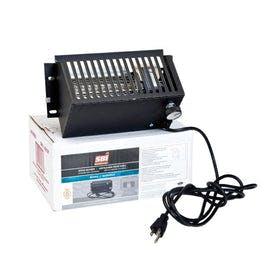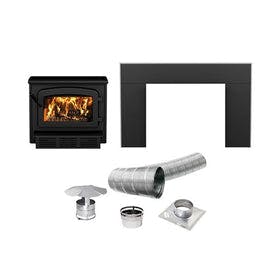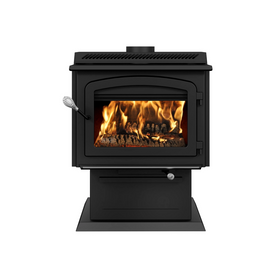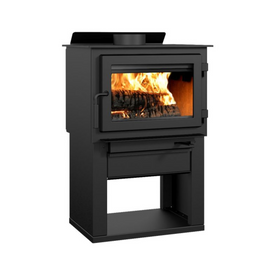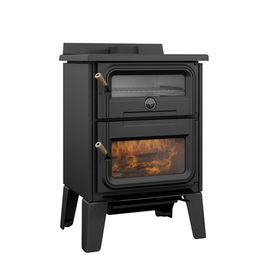
Winter Readiness Checklist for the Home
Last Updated: Apr 13, 2025The leaves are falling, days are shortening, and the first thing you do in the early morning is to pull on your slippers and turn up the thermostat. These telltale signs of the imminent arrival of winter bring along visions of long, cold days huddled up inside your home. Most of us spend long hours in our homes during those gray, winter days when just opening the door to get to your car makes you miserable. Global warming is often associated with hot, dry summers and extreme storms. A 2017 study published in the journal Nature Geoscience found a link between warmer Arctic temperatures and colder winters in North America. Those once in a lifetime Polar vortexes might become the norm sooner than we might think.
Table of Contents
- Winterize Your Home Heating System
- Replace Your Furnace Filter
- Have an Alternative Way to Heat Your Home
- Have Some Deicing Agent Near the Door
- Stock Up on Manual Kitchen "Appliances"
- Run Your Ceiling Fans, But in Reverse
- Make a Draft Snake
- Add Weather-Stripping Wherever Two Different Building Materials Meet
- Go the Extra Mile to Protect Your Indoor Air Quality
- Winterize Your Water Pipes
- Review Your Insulation

Because we spend so much time at home in the wintertime, making sure that our homes are best prepared to keep us warm and cozy is something that every homeowner should do during the fall. Below, we offer a winter readiness checklist. These tips will enable you to rest comfortably in front of your warm wood stove for the next few months of cold weather.
Winterize Your Home Heating System
The most crucial winter-readiness aspect of the resilient home is your home heating system. Even the best-insulated residences will quickly become unlivable if a central furnace or heat pump goes out. To make sure that your central furnace, heat pump, or other heating system is ready for another long winter, consider doing the following tasks:
- Test your heating system before the cold sets in. This preparation will let you make sure that things are still working correctly.
- Call an HVAC professional for a standard maintenance inspection. These professionals can identify parts that might need replacing, thus avoiding potential breakdowns.
- Check and monitor fuel levels. Almost 48 percent of homes in the United States rely on natural gas for their home heating needs. If you are not supplied by a utility's service line, make sure that you have sufficient natural gas in your tank to last through the winter.
- Install carbon monoxide detectors. Carbon monoxide is a deadly killer, and improperly working HVAC equipment might lead this gas into your home.
- Check your exhaust vents. Birds, squirrels, and other animals love making their nests in the exhaust vents in your roof or on the exterior walls of your house. Blocked exhaust vents pose a fire hazard for your family and reduce your home heating system's efficiency.

Replace Your Furnace Filter
Changing the air filters on your home's HVAC equipment should be a bi-monthly task. Doing this before winter sets in is especially important to protect and improve your home's indoor air quality. Because we spend more time inside during the winter, keeping our inside air free from dust and other allergens is essential in protecting our health. With the COVID-19 cases expected to continue to surge throughout the winter, upgrading to a high-efficiency particulate air (HEPA) air filter can help protect your family from COVID and other viruses. One recent study found that high-efficiency air filters are one of the reasons that COVID-19 transmission is almost an impossibility in the circulated air of a closed airplane cabin.
Changing your air filters might also increase the efficiency of your home heating system. Dirty filters tend to block airflow, thus forcing your furnace to work harder and expend more energy. Electrostatic filters have recently hit the market. While they're marginally more expensive, they do trap more potential allergens and bacteria that make their way into your home through your heating ducts.
Have an Alternative Way to Heat Your Home
According to the EIA (the Energy Information Administration), close to 85 percent of all residential homes heat their houses with electricity and natural gas. The frequency and intensity of extreme winter weather are likely to only increase in the coming years due to global climate change. Mega snowstorms have regularly caused massive power outages, which, besides leading to billions of dollars of damage, can also leave your family vulnerable to a home without heat.
If your house isn't equipped with a wood-burning fireplace or a wood stove, consider purchasing kerosene heaters or a gasoline or solar-powered generator, and several space heaters. This effort will allow you to stay comfortable and safe during those extreme weather events if severe winter weather causes an extended power outage.

Have Some Deicing Agent Near the Door
It can be hard to gauge what a night of sleet and rain has left on your front porch. Ice is often hard to spot, and many people have slipped on unseen ice on their patio or driveway, leading to a sore bottom or worse. Having a deicing agent nearby makes it easy to keep your front stairs or porch around your house safe to walk on throughout winter.
Unfortunately, most of the commercial deicing agents sold at your local hardware store are made from chemical solutions that include high salt concentrations. These chemicals and salts tend to build up in the soil around your yard and negatively affect the soil fertility by impeding the uptake of moisture and nutrients by plants. Some deicing agents can leach heavy metals into the environment in the worst of cases, potentially contaminating water sources.
Instead of relying on these chemical deicers, consider using natural deicing materials such as sand, ashes from your wood fireplace, and even sugar beet juice. If you do not have these materials on hand, look for organic or salt-free deicing products.
Stock Up on Manual Kitchen "Appliances"
In most of our kitchens today, almost every appliance comes with some sort of cord. Manually operated can openers, juicers, eggbeaters, and dozens of other kitchen utensils are today relegated to our grandmother's attic or antique stores. Having manual kitchen utensils on hand, however, can be a lifesaver during power outages. Trying to open up a can of soup with a knife is a frustrating experience indeed. Check out this Rise guide on the best human-powered kitchen appliances. Not only will they come in handy if a winter surge knocks out your power, but they can also go a long way in lowering your monthly energy bill.

Make a Draft Snake
Those cold drafts flowing through your home can be discomforting and also waste significant amounts of energy. For this reason, a tightly sealed building envelope is one of the essential principles of passive homes, net-zero construction, and other sustainable building techniques.
If your windows are drafty around the frame, a little bit of bubble wrap can be taped up around the frame until warmer weather allows for a more permanent fix. Another place where drafts are typical is underneath doors. A simple draft snake can be easily made at home and placed at the foot of doors to keep the cold air out. However, when spring rolls around, make it a priority to invest in high-efficiency windows and doors, as these are some of the most vulnerable areas in a home where heat loss occurs.
Add Weather-Stripping Wherever Two Different Building Materials Meet
Wherever two different construction materials meet, there is the danger of a loss of energy efficiency through drafts. You can find these leaks by holding up a tissue in front of windows and other vulnerable areas on a windy day to try to identify even the smallest leaks. Simple caulk is a great DIY weatherstripping agent that almost anyone can use. You can also find weatherstripping kits at stores like Home Depot for under $15. These kits will most likely pay for themselves in lower energy bills throughout the winter months.

Go the Extra Mile to Protect Your Indoor Air Quality
The Environmental Protection Agency (EPA) estimates that the concentration of airborne contaminants and pollutants is between two and five times higher than typical outdoor concentrations. Because colder weather forces us to spend extra time indoors, finding ways to actively improve our home's air quality can lead to better health. Consider buying some of the best air-purifying plants or purchasing one of the top home air purifiers on the market today. Incorporating some outdoor living areas for the winter months is a great way to force yourself to get outdoors and enjoy some fresh air even when it's snowing.

Winterize Your Water Pipes
There is nothing worse than waking up one cold winter morning and finding your basement flooded with an inch of water. Exposed and under-insulated piping in your home plumbing system is extremely vulnerable to cracking and leaks. Before freezing temperatures set in, make sure to insulate any pipes that are in the unconditioned spaces of your home. Outdoor water faucets or spigots also need to have the water supply turned off and drained during fall. Investing in a smart water leak detector is also an excellent strategy to catch any leaks before becoming unmanageable.
Review Your Insulation
A well-insulated home is like the difference between sleeping underneath a down-filled comforter and a simple polyester sheet. A home energy audit is a smart way to identify under-insulated areas in your walls, ceiling, attic, and floors. Even if you don't have the financial means to improve your insulation this fall, you can improve your home's thermal performance by insulating any exterior outlets or switch plates with cheap foam sealing products. Also, if your home has an older tank-style water heater, consider investing in an insulating blanket to cut back on your home water heating bill.

These simple strategies outlined above will not only help you save on your winter heating bills, but they also will improve the resilience of your home in the event of an extended power outage.
Tobias Roberts
Tobias runs an agroecology farm and a natural building collective in the mountains of El Salvador. He specializes in earthen construction methods and uses permaculture design methods to integrate structures into the sustainability of the landscape.


